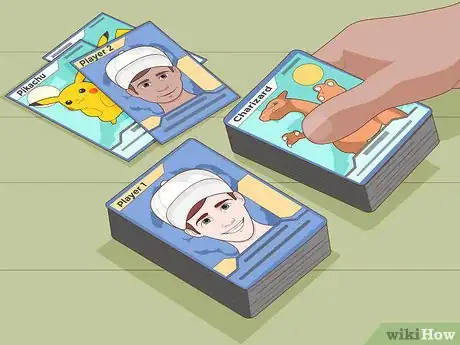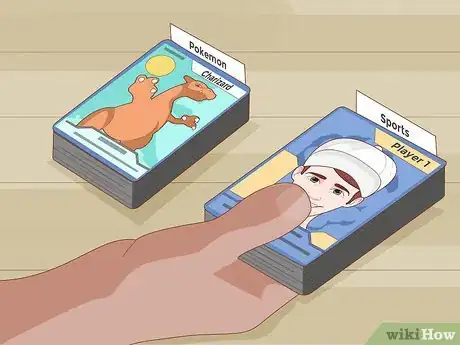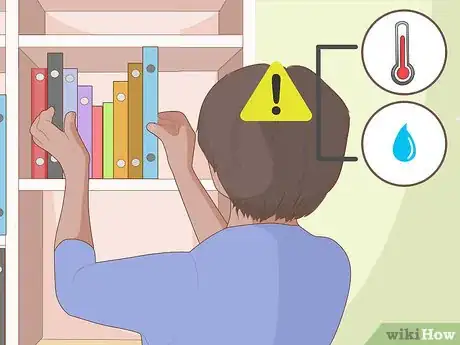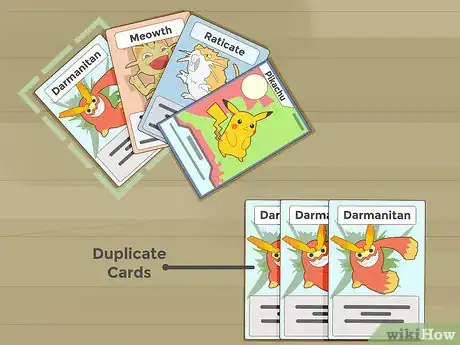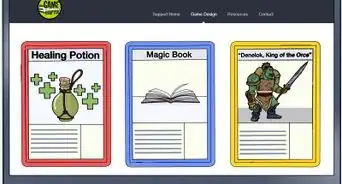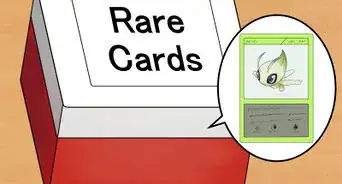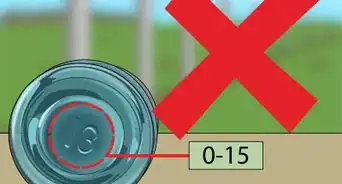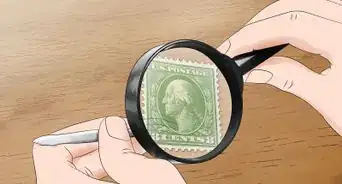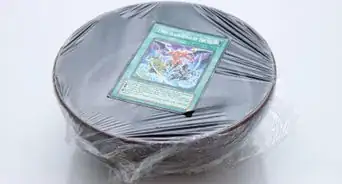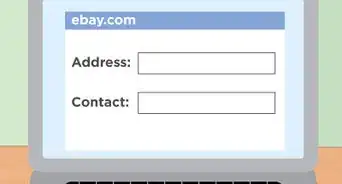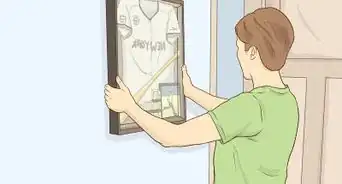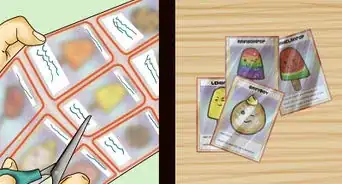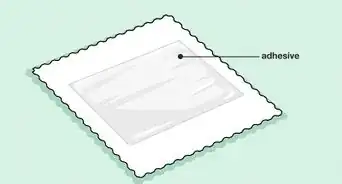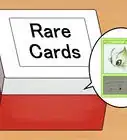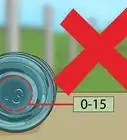This article was co-authored by Caitlin Jaymes. Caitlin Jaymes is a Closet Organizer and Fashion Stylist based in Los Angeles, California. With a background in Fashion PR and Fashion Design, she specializes in creating wardrobes for her clients with pieces they already own. She has experience working with celebrities, editorial shoots, and men and women of all ages. Caitlin uses fashion and organization to help instill and influence confidence, ambition, and stress-free lifestyles for all her clients. She runs her business by two guiding principles: “fashion has no rules, only guidance on how to look and feel your best” and “life has too many stressors, don’t let clutter be one of them.” Caitlin’s work has been featured on HGTV, The Rachael Ray Show, VoyageLA, Liverpool Los Angeles, and the Brother Snapchat Channel.
There are 8 references cited in this article, which can be found at the bottom of the page.
This article has been viewed 109,713 times.
If you're passionate about collecting your trading cards, there will eventually come a point where your collection becomes too big to keep proper track of. Organizing your trading card collection is an inevitable priority for anyone who wants to get serious about the hobby. With a well-kept trading card collection, you can maximize the look and efficiency of your card-keeping. Better still, if it comes time to show off your stash to someone, getting everything organized will make your collection look all the more impressive.
Steps
Sorting Your Cards
-
1Get a binder or box. Most card collectors use binders to keep their cards. A binder offers safety and an accessible showcase if you want to show your cards off to someone. You should prepare to buy a high-quality binder that's appropriate for displaying such high-value items. Boxes, on the other hand, offer more safety, but don't have the same readymade presentation. If you get a box, index card dividers will act as a trusty partition between categories. Each of these index partitions will help you categorize the cards within each box. Sticky tabs may be used to the same effect in binders.
- If your cards are too valuable to be worth storing in basic binders, it may be worth it to buy high-protection plastic sleeves for each of the cards.[1] This will reduce smudging and tear risks. Toploaders are recommended for the most hardcore, high-value collectors.[2]
- Depending on the size of your collection, you may need multiple binders and boxes. If this is the case, you should try to turn each binder/box into a broad category.
-
2Choose an organization method.[3] Depending on the type of trading cards you're using, it's a good idea to figure out early on how you're going to sort your cards. Most card brands offer prescribed categories. You may choose to follow these categories if you want. Otherwise, you can order them numerically (if applicable) or alphabetically — this can be especially helpful if you plan on someday selling your collection, since it will be easier to find everything. A numerical or alphabetical ordering system can be used within each category as well.
- Sports cards might be categorized by player type, team, year, set and the sport itself. Some collector choose to specialize in specific teams. Collecting all of the cards in a given team will increase your collection's value.
- Pokemon cards might be categorized by the particular card type or its rareness. Other "character" cards may be sorted according to the unique categories of that given product.
- For duplicate cards, you can place them side by side. For less valuable cards in binders, a common trick is to make the cards share the same sleeve. It is helpful to make a note somewhere that the duplicate exists, as it won't be readily visible from the start.
Advertisement -
3Sort by your chosen category.[4] Before you put the cards into a binder, it's a good idea to sort them out first. Place each card in its assigned pile. Keep a healthy distance of space between certain piles. If you are dealing with enough cards, the piles may get big enough to the point where separate piles eventually merge.
-
4Label your sections. Once you have your card piles sorted out, it's time to list the categories listed in your box or binder. With a permanent marker, neatly list the category on a tab and place it at the beginning of a given category. It helps to have all of your categories planned out before you get to this stage. That way, you can allot enough space to each section in your storage.
- Though it may seem obvious, you should make a point of marking the box or binder itself. If you're storing them in your attic, they can get lost amidst a number of other things.
- There's a tendency for collectors to scribble the categories. While you obviously don't need to make the lettering perfect, it is a good idea to ensure the writing is legible for anyone who might see it. Furthermore, giving your lettering some creative flair might add to the aesthetic value of your collection.
- It's a good idea to count out the number of cards in each category before marking your sections. That way, you can give each category ample space in your binder.
-
5Put the cards in their place.[5] Organizing a collection should be relaxing, and won't require all of your attention. Put on a show or listen to music while you arrange the cards by type. This will make your time feel more worthwhile. Make a point of placing the cards in carefully. If your cards have a monetary worth associated with them, the slightest crease or tear could ruin their value.
-
6Leave room for missing cards. The vast majority of card collections are constantly growing. If you're a passionate collector, you'll always be on the lookout for new additions. With this in mind, it's good to organize your binder with future finds in mind. Leave some extra space at the end of each category to accommodate for this.
- If you're ordering within each category itself, you can save yourself organizing in the future by taking account of the cards you still need. If there's a limited amount needed to complete a collection, leave an open space where that card will eventually go. This also gives you a visual reference as to how complete your collection currently is.
- If your collection expands beyond the capacity of your given storage, it may be time to reorganize the collection. Luckily, with your cards already in their proper categories, reorganizing will only take a fraction of the original time it took to get things together.
-
7Find a safe place to store your cards.[6] Trading card collections can be very valuable, both emotionally and financially. With that in mind, finding a spot where they'll be safe and untouched is paramount. A temperate basement or attic is a good place to store basic hobby cards for the long-term. More valuable cards should be kept somewhere heat and moisture controlled, like an office. Renting out a moisture-regulated lockup to keep your cards in is recommended if they're sufficiently valuable. If you want quick access to your collection, a filing cabinet is a good idea. Binders are more frail than boxes, and should be placed in a storage box if you're storing them for a long time.
- Make sure your basement or attic is free from excess issues like heat or moisture. If this is the case, you should store it somewhere more temperate, such as a bedroom closet.
- If you have to store your cards in a damp or hot area, you should invest in rigid snap-cases. This will protect your cards from most of the environmental issues. They can run up a cost if you need enough of them, but they're worth it if your cards are sufficiently valuable.[7]
- If your collection carries some significant monetary weight, it's not unreasonable to lock it up in a safe.
Cataloguing a Large Collection
-
1Make a spreadsheet.[8] A spreadsheet will give you quick fingertip access to your cards and a way to automatically catalogue what you have. While a digital representation of your card collection may be redundant for smaller collections, it becomes increasingly useful once your collection crosses over into needing multiple boxes or binders.
- Make sure to include the essential card data, including the name, category, and estimated monetary value. Sports cards will indicate the maker of the card, the year, sport, player name, number, condition and whether or not the card itself is signed. Other card systems (such as "character" cards) should be catalogued according to each of that brand's specific properties.
- There are software programs specifically designed for card-collecting. If a spreadsheet is too impersonal for your needs, you should look up a card organizing program.[9]
-
2Number your cards.[10] Although it's not recommended that you draw numbers on the cards themselves, it can be useful to associate a given card with a corresponding number. This offers a shorthand method of referring to certain cards. Again, this is a card-keeping method that only really makes sense if your collection gets really big.
-
3Keep track of your card values.[11] Trading cards can have enormous monetary value. A lot of things factor into a card's market worth, including condition, rarity, desirability and historical significance. If you aren't sure of the values themselves, you can show them to trading card specialist. For a fee, a specialist will appraise the condition and rarity of a card and give you a rough estimate of its worth on the market.
-
4Set aside duplicates and tradables. An avid collector will inevitably run into plenty of duplicates. Having more than one card isn't usually seen as a particularly desirable, but a card copy can come in handy if you're trading with other collectors. With this in mind, it's a good idea to set aside the cards you want to trade. At a convention, you may run into another collector that has a card you want. By trading your duplicates for cards you want, you'll be able to get a solid use out of them.
-
5Organize your collection as early as possible. The longer you let your collection grow unchecked, the more harrowing it will be to ultimately get it in order.[12] If you're starting out with a trading card collection, it's never too early to start sorting them out by type. As time goes on, your categories will get more elaborate. However, even a basic set of 5-10 cards can be arranged in a way that makes logical sense.
Community Q&A
-
QuestionDo I sort by year after last year shown on the card (year printed)?
 Community AnswerYes. Typically, the year of the card is actually the year after the last stat line on the card. For instance, if the card shows statistics for the 2016 season, then the card is a 2017 one.
Community AnswerYes. Typically, the year of the card is actually the year after the last stat line on the card. For instance, if the card shows statistics for the 2016 season, then the card is a 2017 one. -
QuestionDo you put card per pocket on a 9-slot binder sleeve or 2 cards back-to-back?
 Community AnswerThe best way to organize cards is to put them into perfect-fit sleeves first and then put them inside a binder sleeve back to back. The perfect-fit sleeve offers protection for your collection from humidity, dust, friction and other contaminants.
Community AnswerThe best way to organize cards is to put them into perfect-fit sleeves first and then put them inside a binder sleeve back to back. The perfect-fit sleeve offers protection for your collection from humidity, dust, friction and other contaminants. -
QuestionWho determines a value of a card?
 Community AnswerThe value of a card is determined by rarity, how much demand there is for the card itself, the print runs and the amount of reprints in the case of TCGs like Magic: The Gathering, Pokemon etc.
Community AnswerThe value of a card is determined by rarity, how much demand there is for the card itself, the print runs and the amount of reprints in the case of TCGs like Magic: The Gathering, Pokemon etc.
Warnings
- It may be worthwhile to insure your cards if they're valuable enough. Insurance companies will want a proper estimate of the amount of cards you have. This makes card-organizing a very practical thing if you're serious enough about the hobby.[15]⧼thumbs_response⧽
References
- ↑ http://www.cardboardconnection.com/collecting-101/how-should-i-store-my-sports-cards/
- ↑ http://www.bcwsupplies.com/type/toploader
- ↑ http://www.ebay.co.uk/gds/Your-Guide-to-Organizing-Magic-Cards-/10000000178723423/g.html
- ↑ http://www.cardboardconnection.com/5-easy-steps-organize-sports-cards
- ↑ http://www.cardboardconnection.com/5-easy-steps-organize-sports-cards
- ↑ http://www.ebay.com.au/gds/12-Tips-for-Collecting-Trading-Cards-/10000000177633844/g.html
- ↑ http://www.ebay.com/gds/How-To-Protect-And-Display-Your-Trading-Card-Collection-/10000000000019675/g.html
- ↑ http://www.cardboardconnection.com/5-easy-steps-organize-sports-cards
- ↑ http://virtual-playtable.software.informer.com/
- ↑ http://www.cardboardconnection.com/5-easy-steps-organize-sports-cards
- ↑ http://www.ebay.com.au/gds/12-Tips-for-Collecting-Trading-Cards-/10000000177633844/g.html
- ↑ http://thewrapper.tripod.com/organizing.html
- ↑ http://www.ebay.com.au/gds/12-Tips-for-Collecting-Trading-Cards-/10000000177633844/g.html
- ↑ http://www.cardboardconnection.com/5-easy-steps-organize-sports-cards
- ↑ http://www.cardboardconnection.com/5-easy-steps-organize-sports-cards
About This Article
There are a few different ways to organize your trading cards and keep track of them. Put your collection in a card binder or a box with partitions. Then, decide how you’ll organize your cards so you can find them easily. For cards you battle with, like Pokemon and Yu-gi-oh, categorize them by type or rareness. For sports cards, separate them by team, player position, or year. If you want to buy more cards, leave space for your missing cards in each section. Once you’ve categorized your cards into their sections, label each section with a marker or stickers to make it clear. For more tips, including how to make a spreadsheet to catalogue a large collection, read on!


